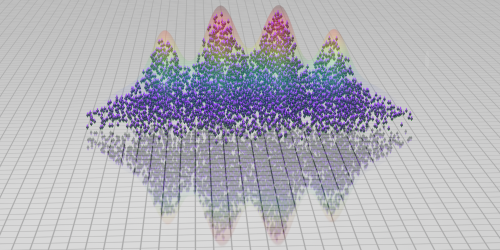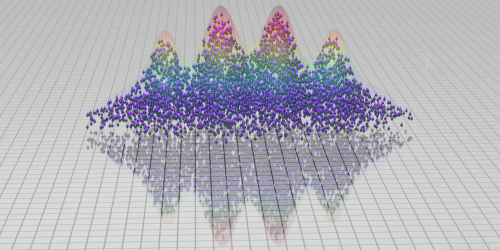Spectral Evidence of a Supersolid Made of Cold Atoms
For fifty years, theorists have predicted the existence of a quantum phase of matter known as a supersolid. Like a superfluid, a supersolid flows without friction, but its particles form a crystalline arrangement. Recently, researchers have been trying to induce a supersolid phase transition in a type of quantum atomic gas called a Bose-Einstein condensate (BEC). In particular, they work with atoms with large magnetic dipole moments, whose interactions can give rise to this phase of matter (see 3 April 2019 Viewpoint). Now, by combining simulations and experiments, Francesca Ferlaino of the University of Innsbruck, Austria, and colleagues have found further evidence of a supersolid phase in a BEC made of erbium atoms.
The team first used theoretical simulations to show that the energy-momentum spectrum of a material undergoing a supersolid phase transition should exhibit a distinctive structure. Approaching the transition, for a given momentum, the system will exhibit two different energy states simultaneously. The pair of states shows up on the excitation spectra as a distinctive structure that resembles two branches. The two branches arise from two simultaneous broken symmetries: one symmetry that is associated with crystalline order, and another associated with the material’s frictionless flow.
The team next investigated part of this spectrum for an erbium BEC. To do this, they corralled the atoms into a 3D trap that was elongated in one direction. Then, by quickly changing the size of the trap, they expanded and contracted the gas. The moving atoms, which interfere with each other, cause the supersolid to produce a changing interference pattern. Analyzing this pattern, the researchers identified multiple excitation modes that, like the simulation, reveal two branches. This spectral measurement lays the groundwork for future studies of supersolidity and its frictionless character in erbium BECs and other “dipolar gases.”
This research is published in Physical Review Letters.
–Sophia Chen
Sophia Chen is a freelance writer based in Tucson, Arizona.





